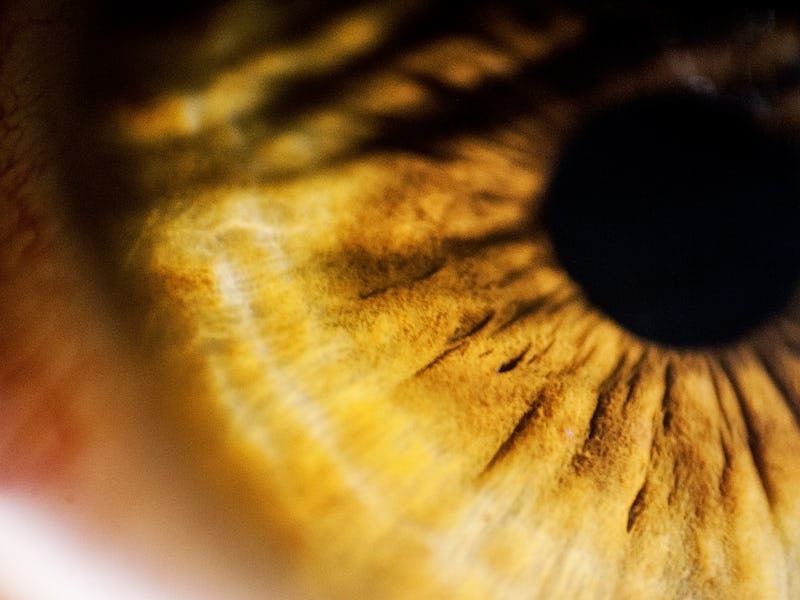Virtual Reality Could Revolutionize the Search for Sex Criminals
By simulating temptation, researchers think they can spot those who might succumb to it.

That sexual gratification can make or break a technology is a truism as old as paleolithic paint. And no emergent technology has more sexual potential than virtual reality headsets like the Oculus Rift and HTV Vive, which promise immersive experiences and are already being passed around the San Fernando Valley. But, even as we brace for too much of a good thing, a handful of psychiatrists are considering ways that VR technology might stop something awful. They believe that VR has tremendous potential as both a diagnostic and therapeutic tool.
They want to find child abusers.
But before scientists can bring the full brunt of virtual reality to bear on forensic psychiatry, they need to answer this question: How powerful is this technology and what is the source of that power? The latest research suggests that VR derives its emotional and sensory power by simulating the sense of presence, what Peter Fromberger, an expert on virtual reality psychotherapy and forensic psychiatry at the University of Göttingen in Germany, describes as “the feeling to be physically in the virtual world.”
“VR seems to be able to enhance the realism and sexual attractiveness of virtual avatars,” Fromberger says. In a recent article in PLOS One, Fromberger and his colleagues had 45 men — 20 androphilic males (sexually attracted to men) and 25 gynephilic males (sexually attracted to women) view nude, adult avatars of both sexes under three conditions: on a computer screen, with the Oculus Rift DK1, or with the Oculus Rift plus a controller, allowing the men to interact by moving the models.
The subjects interacted with the objects of their interest reflexively and naturally. And that’s no small thing. Until that study came out, the assumption that VR would create meaningful sexual experiences was just that, an assumption.
“To the best of our knowledge,” he says, “until now, there existed no empirical evidence for our intrinsic assumption that VR can provide ecologically valid environments for people suffering from sexual deviancy.”
Dominique Trottier, a clinical psychologist at the Université du Québec en Outaouais, says that scholars like Fromberger have helped “establish the validity of the procedure,” and suggest that it’s time to talk application.
Trottier has been studying sexual deviancy through VR since 2006; as it is with Fromberger, her goal is to ultimately reverse engineer the present study, working back from behavior to diagnose motivation, thinking about how interactions predict dispositions. From there, the thinking goes, potential child abusers can use virtual environments to work through and treat their mental disorder.
“One of the best strategies to protect children from becoming a victim is to reliably assess the dangerousness of potential delinquents as well as to successfully treat them,” Fromberger explains. By creating a believable world, he hopes to monitor child abusers in incredibly realistic virtual risk situations — situations where no one will actually be at risk of harm.
How do you test if someone is at risk of abusing children, or, alternatively, no longer at risk of recidivism? Self-reports are unreliable because child abusers tend to be less than forthcoming. Between the 1950s and 1980s, Trottier says, assessments were performed with “real pictures that came from police arresting people with that type of material.” It was, as she points out, “questionable ethically and legally.” More recent methods involve playing audio recordings of sexually stimulating narrated scripts, but Trottier says that it remains possible to fake a lack of arousal. What’s harder to do, as she showed in an eye-tracking experiment, is to not look at virtual avatars. This is a task men have failed at even while trying to keep themselves from having erections.
Combining sexual interest with a feeling of presence, says Trottier, creates an environment that cognitively stimulates sexual offenders. “We can put offenders in situations that we wouldn’t want to in real life, and are able to identify faulty cognition and address that,” she says. It is a training process through repetition, she says, redoing the same situation over and over again so that those who want to get better can “train to make better decisions, or to identify sooner that he is in a risky situation.” She acknowledges VR’s potential as a tool of abuse — the internet has made child pornography easier to access for men like Jared Fogle — but the tool is powerful when used correctly.
Fromberger pictures a future where VR is applied to a host of sexual problems. Project ViRAC – Virtual Environments for the Risk Assessment of Child Abusers — has already tested VR with offenders, he points out. “VR provides the possibility to confront high dangerous criminal offenders with risk situations without endangering others,” he says, which would presumably include rape as well as child abuse. On the non-criminal side, the technology could also offer new training opportunities to eliminate the sense of a lack of control over ejaculation.
But that’s a ways off. The sexual researcher community has been slow to go virtual — the Kinsey institute doesn’t use the tech at all — so there are more theories than defensible conclusions.
“At the moment, these are only ideas, and there is a lack of empirical evidence for the usability of VR in this context. Our paper shows that it can work, but it does not show that it also works with forensic inpatients. That is the next step we have to take.”